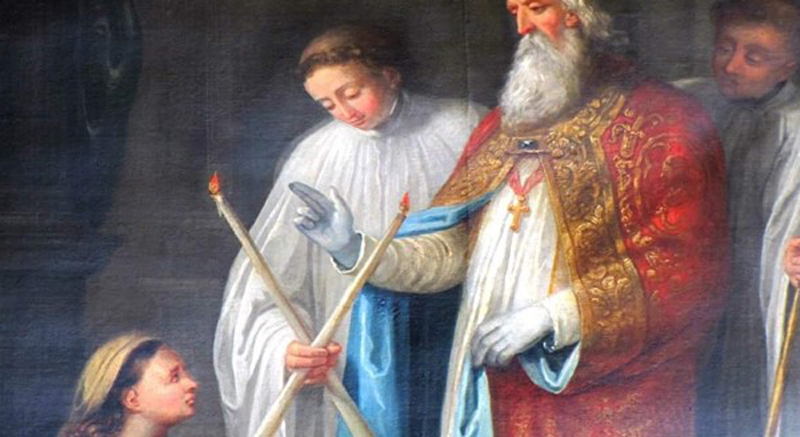(Died 316 AD)
All sources on the life of St. Blaise agree that he was bishop of Sebaste in Armenia and most of the accounts place his martyrdom in the reign of Licinius (about 316). The particulars concerning his life and martyrdom that are found in the Acts are purely legendary and have no claim to historical worth.
According to the legend, Blasius was a physician at Sebaste before he was raised to the episcopal see. At the time of the persecution under Licinius, he was taken prisoner at the command of the governor Agricolaus. The hunters of the governor found him in the wilderness in a cave to which he had retired and while in prison he performed a wonderful cure of a boy who had a fishbone in his throat and who was in danger of choking to death. After suffering various forms of torture St. Blasius was beheaded.
The veneration of the Blaise was brought at an early date into Europe, as is shown by the recitals in the historical martyrologies of the ninth century, and the Latin recension of the legend of St. Blasius. Blasius became one of the most popular saints of the Middle Ages. The actual reason for the unusual veneration has not yet been made clear. Most probably one ground was that according to the legend he was a physician and wonderful cures were ascribed to him; for this reason, the faithful sought his help and intercession when ill.
Numberless churches and altars were dedicated to him and many localities (Taranto, Ragusa, the Abbey of St. Blasius in the Black Forest, etc.) claimed to possess some of his relics. He was also one of the Fourteen Holy Martyrs.
On his feast day, the blessing of St. Blasius is given: two candles are consecrated, generally by a prayer, these are then held in a crossed position by a priest over the heads of the faithful or the people are touched on the throat with them. In other places oil is consecrated in which the wick of a small candle is dipped and the throats of those present are touched with the wick.
At the same time the following blessing is given: “Per intercessionem S. Blasii liberet te Deus a malo gutteris et a quovis alio malo” (May God at the intercession of St. Blasius preserve you from throat troubles and every other evil). In some dioceses is added: “in nomine Patris et Filii et Spiritus” and the priest makes the sign of the cross over the faithful.
Adapted by A.J. Valentini from: St. Blaise, Bishop and Martyr | EWTN. (n.d.). EWTN Global Catholic Television Network. Retrieved January 26, 2021, from https://www.ewtn.com/catholicism/library/saint-blaise-bishop-and-martyr-5322
